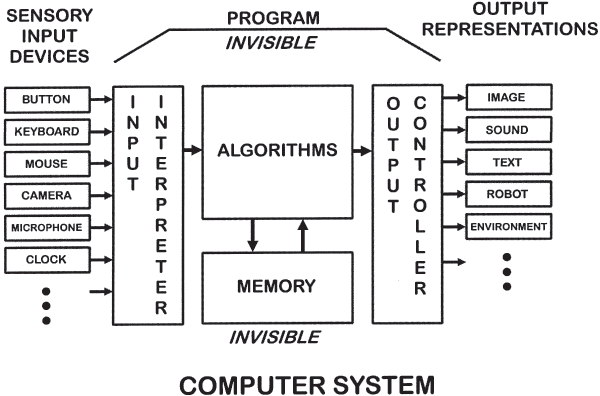Looking Outwards – Formula for Computer Art
I thought some people might be interested in knowing a bit of background on Jim Campbell’s Formula for Computer Art. Campbell published the diagram in an article for the journal Leonardo in 2000. It is well worth a read:
Delusions of Dialogue: Control and Choice in Interactive Art
The process that Campbell outlines can be thought of as transcoding data from one form to another. I don’t think this abstraction is escapable, and I don’t think adding interactivity, in the form of a feedback loop, necessarily makes the system more meaningful.
What we can do is make interactions richer by moving away from one off ‘reactions’ towards richer responses. Campbell notes:
The first time I walked through an automatic door at the supermarket I thought the door was smart and was responding to me. Now I step on the mat to open the door on purpose. The point is that often the first time an interface is experienced it is perceived as being responsive, but if the interface is experienced again it becomes controllable. The second time it is not a question but a command.
This is particularly relevant for us now. Audiences are not new to interaction, meaning gimmicks are out, and we have to deal with the expectation of interactivity – “Why doesn’t the [image/sound/robot…] do anything when I [move my arms/speak out loud/touch the screen…] ?”
For non-interactive art the question is: Do we see Campbell’s formula in the work? Is out attention drawn by the questions the work raises, or the insight it gives us, or the aesthetic beauty? Or does the work lack substance and all we see are sensors connected to actuators?

There’s actually another almost identical diagram by another artist from 1990. Remind me and I’ll dig it up. I was surprised to discover it.
That would be great.